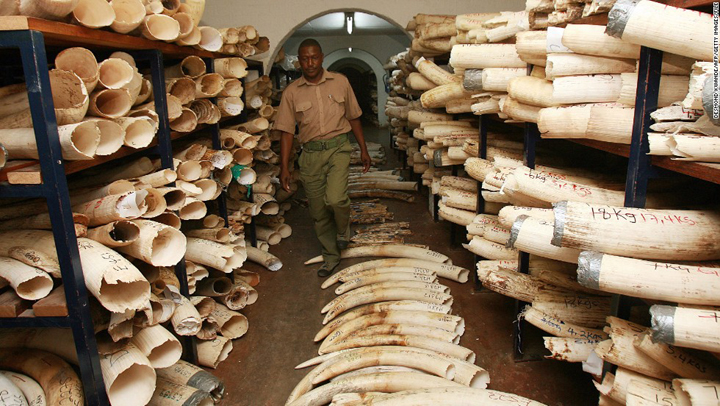A ban on the commercial trade of Ivory will remain in place after member countries of the United Nation’s Convention on International Trade in Endangered Species (CITES) today voted against Zimbabwe’s proposal to have the ban lifted.
Zimbabwe, together with Namibia had been pushing for the trade of ivory to be legalized arguing that the restriction had spurred poaching and that allowing trade would bolster conservation efforts.
At 84 000, Zimbabwe’s elephant population is twice that of its carrying capacity, triggering conflict between wildlife and rural communities.
Zimbabwe has previously stated that the country has lost 439 tonnes of ivory worth $226 million to illegal hunting as a direct result of the ban.
In secret ballots, Namibia’s proposal lost 73 to 27, Zimbabwe’s 80 to 21, with two-thirds majority required to pass.
CITES maintains three levels of control. Appendix I, the most stringent, includes species that are in immediate danger of extinction. CITES generally prohibits international trade of these species.
Appendix II lists species that are likely to become in danger of extinction without strict protection from international trade. Permits may be obtained for the trade of Appendix II species only if trade will not harm the survival prospects of the species in the wild.
Appendix III includes species identified by individual countries as being subject to conservation regulations within its borders.
In 1997, CITES transferred the African elephant populations of Botswana, Namibia and Zimbabwe to CITES Appendix II with an “annotation” that did not allow regular international ivory trade for commercial purposes.
However, after giving in to pressure from Botswana, Namibia, and Zimbabwe, CITES agreed to allow a “one-time, experimental” export of 49 metric tons of government-stockpiled ivory to Japan in 1999.
In 2008, CITES increased the amount of government-stockpiled ivory that could be exported to 108 metric tons, and included Zimbabwe among the African countries that could take part in the export destined for Japan and China. The group agreed not to approve additional ivory trade for nine-years.
This year, Zimbabwe had proposed to amend the present Appendix II listing of its population of the African Elephant by removing the annotation in order to achieve an unqualified Appendix II listing.
Zimbabwe has a 70 tonne ivory stockpile estimated to be worth $35 million.
Other African nations, such as Kenya, are strongly opposed to any reopening of the ivory trade on the grounds that it will stimulate demand and threaten its own elephant population.
Swaziland has tabled a separate proposal to sell rhino horn but is also unlikely to get the green light.-The Source
(62 VIEWS)
